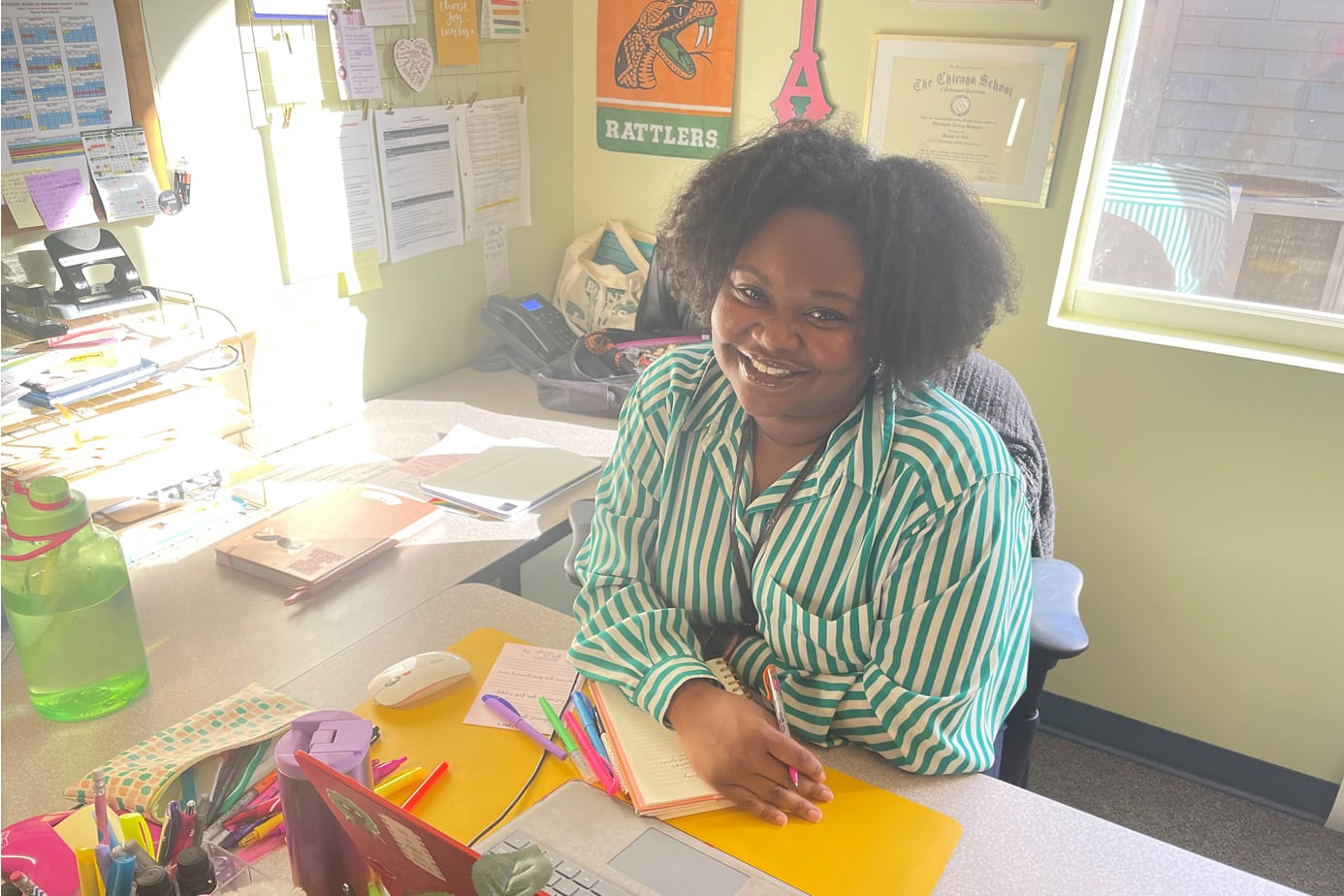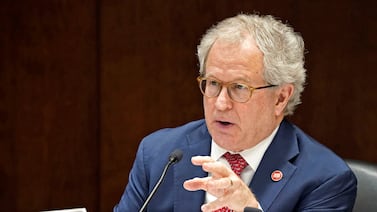Sharayne Douglas never expected to become a therapist. Today, she works with teenage girls and their families in South Florida through the Pace Center for Girls — a nonprofit that provides free academic support, counseling, and other services to girls who have experienced trauma, some of whom have struggled with school, social interactions, or had previous involvement in the juvenile justice system.
Douglas’ work takes her to six different schools, where she works closely with students to provide highly individualized support. Her efforts come at a critical time, as the pandemic has intensified mental health challenges among young people — particularly girls.
Counseling wasn’t Douglas’ original plan. As an undergraduate student, she wanted to teach. But the same week she was rejected from a teaching program, she was recruited to a graduate school program that led her to become a counselor.
“I’m a person that believes in fate,” she said. “In my program, I began learning the art of therapy. I came to understand the need for people that looked like me — people from similar backgrounds who have had similar experiences to me — to be able to do this work.”
Though her graduate studies took her away from her home state, Douglas, who has a master’s degree in clinical psychology, has since returned to the community that raised her. And as a former camp counselor, she had long seen the importance of providing younger kids with a trusted mentor who isn’t a parent. Working with kids was a natural fit.
“It’s very cool to be a part of their support system in that way,” she said. “I always knew I wanted to focus on teens and children, and it just worked itself out.”
This interview has been edited for length and clarity.
How does your work intersect with schools in supporting the girls you work with?
I like to consider myself a part of the village that is raising these girls. They get familiar with seeing me at their school and at their home. Sometimes at Pace we have the liberty of picking our girls up and going to restaurants, grabbing food, or doing different activities. So they don’t just experience me in one setting, and because they know I’m fluid in how we meet and where we meet, I’m able to be an advocate for them, especially when it comes to school programs.
It really is a support that goes beyond just mental health treatment.
How has the pandemic affected your students and the issues they face?
I saw a big increase in risky internet behavior — not knowing if they’re talking to the right people — and an increase in cyberbullying.
A lot of the work that I’ve done as it pertains to the aftermath of COVID is really helping them understand what qualifies as a healthy relationship and what qualifies as a healthy friendship. In that space, a lot of girls were grabbing for companionship whether it be healthy or not.
I’ve also emphasized being okay with being alone, and what that looks like for them. We were forced to have alone time during the pandemic, but a lot of people were uncomfortable with that. So teaching them where these uncomfortable feelings come from and how we can make time by ourselves a little bit more productive.
What feels different about this school year compared to the last one?
There’s more of an emphasis on mental health challenges, period. It’s something that schools can’t really ignore anymore. A lot of the schools that I go to have their own forms of education set in place, and a lot of my students already know different coping techniques, such as deep breathing.
We’ve had an influx of referrals from different schools and community agencies because they’re understanding that more students could benefit from that one-on-one time.
What advice or strategies do you give students as they’re coping with difficult mental health challenges?
It varies depending on the student. I always like to say that I’m giving them things to put in their toolkits. That can look like going on YouTube and looking at different meditation regimens, different stretching they can do, and ways to distract themselves from intrusive thoughts.
A lot of it starts with psychoeducation — knowing that this is what anxiety is, this is what depression is. These are things that you already know you’re experiencing, but it’s actually been studied, and these are the ways that people are able to combat these different symptoms.
I also give my girls different creative activities. I’m not an art therapist per se, but we definitely have different art prompts. Some girls who don’t really like to draw or express themselves in that way, we do writing exercises. I’ve even had some of my girls create their own dances when they’re feeling anxious in the moment. So I try to utilize their interests and strengths and have them form their own coping techniques based on what makes them feel better.
How did your experiences in school influence the way you approach your work?
I always just try to be the person that I needed as a child.
One of the first schools I ever worked at was my actual elementary school. I remember having a student in fourth grade, and she looked like me when I was in fourth grade. She was getting bullied, and I got bullied in elementary school. A lot of kids that age don’t realize that things will pass; they have a very skewed view of what time is. So I was teaching her affirmations, giving her that hope that things will get better, and being that example, too.
In the therapeutic world, that’s when self-disclosure is helpful to tell them, “Hey, I was literally in your space some odd years ago, and I got past it.” It’s honoring what they’re going through but knowing they can get past it as well.
I’ve had the opportunity to work in my elementary school, my middle school, and my high school because I am from this community. I’m so honored to be able to bring my full self. I get to use the lingo that our girls use, and they understand it. We listen to the same type of music and the same artists. They see me as a real person that is going to help them and teach them, but we have fun as well.
It’s rewarding work in that way.
Julian Shen-Berro is a reporter covering national issues. Contact him at jshen-berro@chalkbeat.org.






